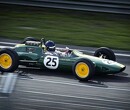As many Formula 1 fans are aware, the FIA and Liberty Media have introduced a package of new rules for 2019. The main focus of these changes is on aerodynamics, but one of the less notable tweaks is the increase in the maximum amount of fuel that can be used during a race - a shift that is bound to create headaches for the teams.
Up until 2018, Formula 1 cars were allowed to consume 105 kilograms of fuel per race, but for 2019 the limit has been raised to 110 kilograms. This should ensure that the drivers are less concerned with saving fuel during the race. However, the change to this rule means that teams will have to design a completely new fuel tank for 2019, and that is what makes the new rules more complex.
Formula 1 always talks about the number of kilograms of fuel a car can use, but the teams themselves calculate with litres. However, the number of kilograms of fuel is not equal to the number of litres, which is due to the specific mass of fuel. Normal fuel has a specific gravity of 0.75, but GPToday.net has heard that this is about 0.73 for the fuel of Formula 1 cars.
That means that one litre of fuel weighs about 0.73 kilograms. But this number varies due to a number of factors, such as the temperature and the developments implemented by a fuel supplier. This makes it possible that a litre of fuel weighs 0.74 kilograms from time to time, but it can also weigh 0.72 kilograms.
These fluctuations make it difficult for the teams to estimate the exact size of the fuel tanks in 2019. If the specific mass of the fuel is 0.73, 110 kilograms of fuel equals 151 litres. However, because external factors can influence the specific mass, the teams must also build in margins.
Racing Point technical director Andy Green said in Barcelona: "One of the big challenges was the fuel allowance going up five kilos, so that's a challenge when the chassis has been designed for a five kilogramme smaller fuel cell.
"It can do," Green added when asked if the specific gravity of fuel varies throughout the year, "which is why we have to be really aware of the density of the fuel that we've predicted we'll use in the season. It's not just the fuel that we're using now, its the updates to the fuel and that can change the specific gravity.
When pressed on how much it could change throughout the year, Green said: "It could go up or down ten litres, from one extreme to the other, which is a substantial volume change. It's something that we have to be aware of.
"We talked to the fuel suppliers pre-season to make sure we know what they're working on, what potentially could come. Hopefully, we've covered that."
Further editing by Fergal Walsh

 7
7



















Paulo F
Posts: 2
Concerning a comment that I guess Hulk did, looks like that bigger wings, thus increase drag, will increase fuel consumption. Is this the reason of increasing fuel capacity? Will drivers, under new regulations, have to lift more to save fuel?